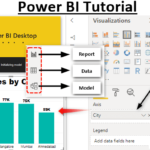Offshore development: Guide to successful offshroe team building
Companies are increasingly trying to get the most out of their information technology dollars. Project managers can strategically support their companies by acquainting yourself with the various aspects of offshoring. This will prepare you for what to expect and help you be more effective in your interactions with an offshore team.
1. Assess competence
First, make an honest assessment of the team’s capabilities. A good start is to shortlist people who have a proven  track record in the desired technology stack, and around similar verticals. The thing to remember is you don’t start by thinking of a team, you start by thinking a local resource who has worked on-site, has an experience of leading teams and trustworthy.
track record in the desired technology stack, and around similar verticals. The thing to remember is you don’t start by thinking of a team, you start by thinking a local resource who has worked on-site, has an experience of leading teams and trustworthy.
Have a local and dedicated project manager assemble the team as locals have direct access and knowledge of resource pools, established relationships with development teams and don’t need that much supervision.
Focus on iterations, complete one full cycle quickly
It’s ideal you break the project into many small tasks, which can each be done independently, define milestones, allow quick integrations. Follow Agile and Scrum methodologies.
This helps you to identify problems sooner than later. Even if you are giving a firm fix price, create many small milestones so that you are on top of it. With a proper process, even a mediocre team can deliver better output.
2. Nothing beats experience
A local manager, prefer ably having experience in working on-site can really ease the task of team building.
ably having experience in working on-site can really ease the task of team building.
Though overlooked, but hire someone with intrinsic motivation, long-term goals, and similar cultural and shared values. When a good project leader is assigned as a liaison between you and the offshore team, avoid erecting artificial layers between the offshore team and end users.
The key to building a successful offshore/distributed development team is to embrace it as a partnership
Build relationships with the delivery head, quality head and other managers – and implement your ideas through them. You need their support to be successful.
3. Establish the process
This is very important, especially at the start of the project. The process and team need to be managed. Don’t burn through a week just setting up the environments; this is where experienced offshore team leaders come in handy. Some quick tips are:
- Don’t offshore fragmented work. Defrag it or assign fragmented work onshore. No less than 8 hours of continuous work
- Offshore team needs an independent project. Communications with a remote site are always logistically constrained, so you want to minimize the amount of communication that’s necessary.
- Establish good coordination through Skype calls, instant messengers, and conference calls.
- Leverage the time differential for an operation that runs day and night, but this will depend on the effectiveness of daily team meets.
- Minimize inter-team dependencies
- Agree on tech for communication, project mgmt. & file sharing
- Conduct a technical interview with the offshore developer to not only assess his or her technical talent, but also the ability to communicate verbally
4. Time zone difference: Your evening is their morning
Overlap work hours for virtual “face time” via conference calls, daily meetings, and instant messenger. Having a 10-12 hours of time difference between the on-site and offshore team poses the most significant challenge in having effective communication. Having some overlap in time zones also helps in conducting daily scrums to answer questions or approve iterations.
Your evening time is offshore team’s morning time, which can be an ideal time for a team meeting/conference calls. People at offshore may not like the idea of meeting in the morning, which is late at night for offshore. Regardless of time, the idea is to have daily calls & brief meetings to help onboard the offshore team and make a smooth transition.
5. The subtle cultural cues
Offshore team building exercise should not be approached from a short-term, outsourced labor perspective. Take time to grow the relationship and figure out how to work together most effectively. The best way is to be picky during the hiring process and quickly transitioning towards the first project, ideally a short 3-6 week project.
This will give a fairly good idea about the offshore team’s communication effectiveness, technical competency, and value fit. Beware of the tendency of offshore resources to avoid giving negative responses, so understand the cultural clues. Work ethic is another area where every offshore team does not fare not equal. Experienced, nimble and technically competent resources make up good team members.






